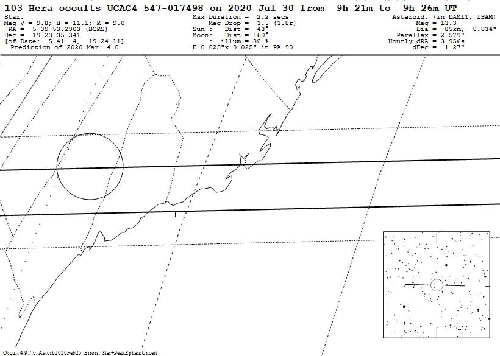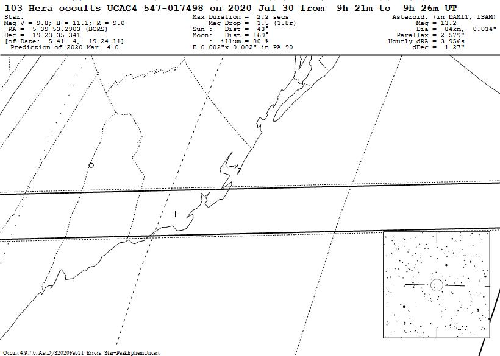Performance of occultation astrometry with Gaia DR2
- 1Université Côte d'Azur, Lagrange, NICE, France (jferreira@oca.eu)
- 2Instituto de Astrofísica e Ciências do Espaço, LISBOA, Portugal
- 3Minor Planet Center, Center for Astrophysics, Harvard & Smithsonian, United States
Stellar occultations provide an instantaneous relative astrometric measurement, as the position of the asteroid center of mass, at the mid-time of the event, is very close to the that of the occulted star. If this target star has an independently measured, accurate position, then the asteroid astrometry can be determined at a similar level of uncertainty. This fact is being routinely exploited, for instance, to improve the orbit of distant Trans-Neptunian Objects after a positive detection of an occultation, thus enhancing the probability of observing subsequent events. However, the same approach can be applied more extensively to the whole available data set of stellar occultations, mainly involving Main Belt asteroids (~5 000 events, for ~1 200 asteroids). We present the results obtained so far in this domain.
The exploitation of stellar astrometry from the Data Release 1 of Gaia has already shown the strong potential for such an approach. However, recent advances have made possible to reach a new level of accuracy.
The first innovation involves a more refined data reduction for occultation astrometry, taking into account differential relativistic effects. The new procedure also provides a more realistic error model, that takes into account both the reported measurement uncertainty, derived from each light curve of an event, and the errors on the position of the occultation chord relative to the asteroid center of mass.
The second major progress is the publication of the new data release by Gaia (DR2) in April 2018, providing nearly the full astrometric performance of the mission, providing proper motions and parallaxes for a large fraction of the stars.
Nevertheless, the exploitation of these data requires some additional care to be effective.
First of all, to exploit asteroid astrometry referred to Gaia DR2, a de-biasing (correction of local systematic errors) must be run on ground based astrometry, when this was reduced by pre-DR2 catalogues. We have recently completed the de-biasing procedure for all 14 099 asteroids present in DR2, and for all the asteroids that produced occultations in the past.
The second critical aspect are the subtle corrections to be applied to the DR2 catalogue to mitigate the impact of a reference frame rotation found in the catalogue (Lindegren 2020).
With this approach, we attempted to improve the asteroid orbits with all archival astrometry included, and with occultations only, for what can be considered to be the best possible exploitation of occultation astrometry to date. We illustrate the obtained performance, and the limitations of the methods for observed events with a small number of observed chords.
With the expected improvement in asteroid orbits brought by Gaia DR2 (and DR3 to come) a large number of smaller asteroids will provide reliable predictions and contribute more systematically to accurate astrometry, to the advantage of the detection of subtle dynamical effects (such as Yarkovsky) directly in the Main Belt.


Fig 1. Prediction by Steve Preston (IOTA) to occultation of (103) Hera on 2020-07-30, using MPC data, compared to our prediction, combining MPC and Gaia. The resulting path uncertainty decreases by a factor of 6 with our method, a decrease verified for most of the asteroids present in GDR2, as the average decrease in the full sample was by a factor of ~5.
How to cite: Ferreira, J., Spoto, F., Tanga, P., and Machado, P.: Performance of occultation astrometry with Gaia DR2, Europlanet Science Congress 2020, online, 21 September–9 Oct 2020, EPSC2020-594, https://doi.org/10.5194/epsc2020-594, 2020

